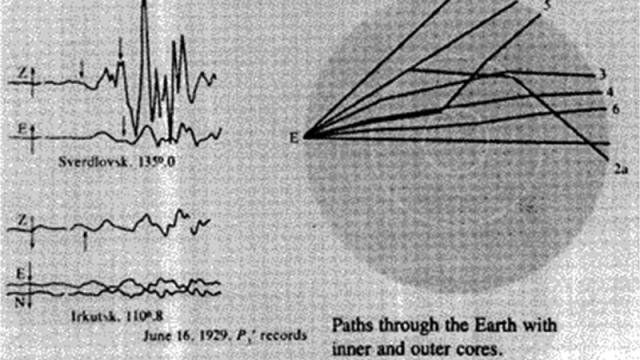When seismology became a global science, researchers realised that there was something weird about how earthquakes travelled through the ground. At first they thought the weirdness was due to a liquid core. This drawing proved they were half right.
As seismographs revolutionised geology in the 1920s, it soon became evident that the Earth was more than just a ball of dirt with a little magma mixed in. Scientists, suddenly able to monitor earthquakes as they happened, noticed that when tremors travelled, they didn’t seem to travel in a straight line or at a steady speed. Seismologists determined the reason for this: below the solid rock lay a liquid core. The transition from liquid to solid both bent and delayed (or accelerated) a wave’s movement. For a time, that’s where the science rested.
Then one scientist, after crunching an awful lot of data, added another complication. Inge Lehmann, working in Denmark directly across the globe from a particularly active part of the pacific rim, showed that earthquakes didn’t get distorted just once or twice. There was another spanner in the works, and it was most likely made of metal. Though the tremor had moved from the solid ground to the liquid layer, it hit a solid metal core. The above drawing represents the distortion of the tremor’s direction by the core.
[Sources: Note’s on Earth’s Inner Core, AIP]
